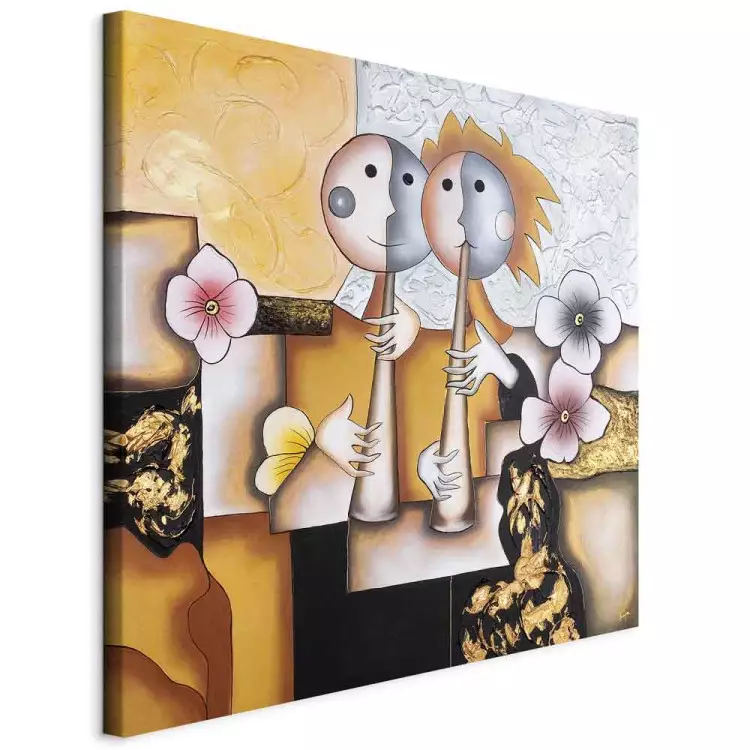Abstract art has been with us in various forms from the times of prehistoric caves to contemporary works, but it often poses a challenge in interpretation and understanding. In an age where time is extremely precious, rushing to an art gallery or museum leads to missing a deeper understanding of abstract works. However, the Slow Art movement, which is gaining global popularity, educates people to devote more time to art to counteract the passing glance.

The beginnings of abstractionism
Abstraction has always been with us in art, its first signs can be seen on Paleolithic amulets and in prehistoric caves Later, abstractionism is visible in all cultures of the world, for example in the form of ornaments. The first painting that is considered abstract is by Wassily Kandinsky.
Famous abstract artists
Wassily Kandinsky is considered a precursor of art, whose work The first abstraction" opened a new chapter in history. At the same time, other artists were exploring a completely new dimension of art. Today we classify their work as abstract painting. Geometric and minimalist patterns are represented today by Kazimir Malevich and Alexander Rodchenko. Abstract paintings by Piet Mondrian are characterized by simple, horizontal and vertical lines and fundamental colors. One of his works is a painting titled "Composition with red". Another type of abstract painting is shown in the work of Jackson Pollock - his paintings are famous for their characteristic way of applying paint to the canvas.
Abstractionism: trends and directions
Abstract art can be divided into two main trends, such as: geometric abstraction, which is based on the use of various geometric forms, and organic abstraction, which uses irregular forms suggesting shapes. Many directions emerged from these trends, often initiated by individual artists who later gained followers.
Abstractionism is divided into the following directions:
- constructivism
- suprematism
- neoplasticism/li>
- De Stijl
- Bauhaus School
- optical art (also called op-art, optical art, visual art)
- Minimal art informel (or abstract expressionism, tachisme, action painting)
- Color field painting
- kinetism

Understanding abstract art
Abstract art is often challenging because we don't devote enough time to it. To gain full understanding, interpretations and feel the emotions associated with abstract works, we must be patient. The Slow Art movement, which is gaining popularity around the world, puts emphasis on people visiting museums and galleries because it believes that people too quickly they travel through the exhibitions, spending less than twenty seconds on it, which results in the loss of many values.

Activities to better understand abstract art
The following steps will allow you to better understand abstract art.
Observation – Give a name to what you see, then look for additional meanings. Recognize the elements you have observed and determine what colors dominate the image.
Interpretation – Read the title of the work. It often contains information about the artist's intention. It is also worth answering the following questions: What is the work trying to convey? How do the elements described influence this transfer? Does the image convey energy or calm?
Personal connection - Most works of art usually begin with the human experience of impulses of emotions and feelings. To increase your understanding of abstract art, it is worth answering the following questions: Did the work influence your emotions in any way? Did you understand the artist's intentions?

To make abstract art more understandable, we need to devote time and patience. The long journey that began with Paleolithic amulets and ended with the works of Wassily Kandinsky initiated new trends and directions in abstract art. Modern people analyzing abstract art should take three key steps: observing, interpreting, and establishing a personal connection with the work. This way, you can more fully enjoy the richness of abstract art, understand the artist's intentions and enrich your emotional experiences. If you are interested in abstract art, visit the online shop bimago where you will find a wide selection of paintings that will add unique character and modernity to your interior.







